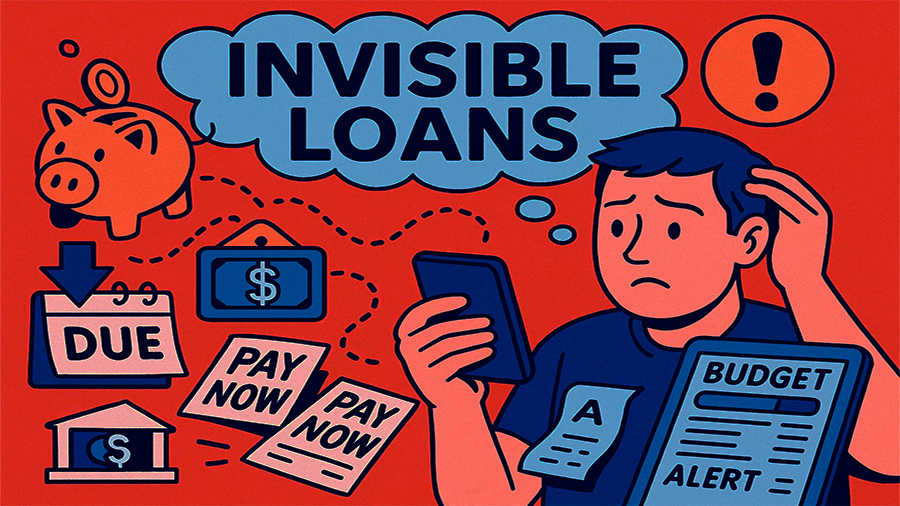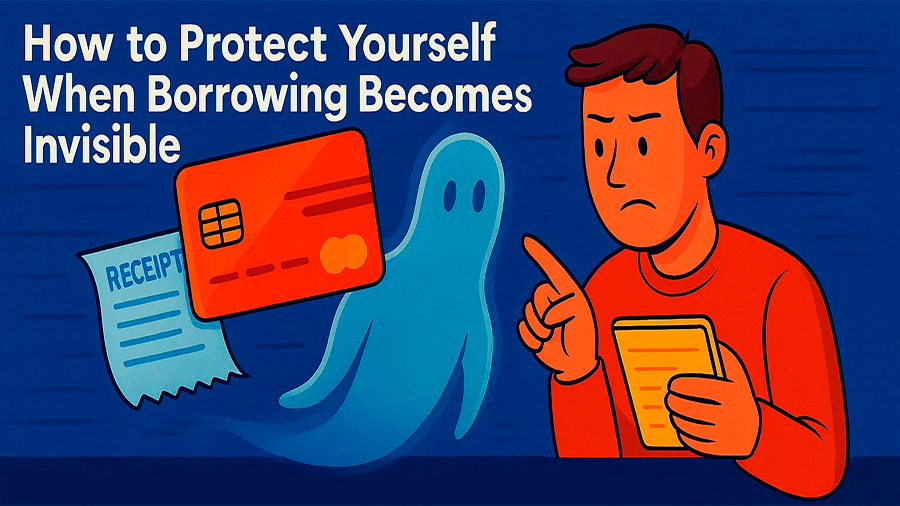What to Do If Loans Become “Invisible” (Embedded in Services)
You used to know when you were borrowing money. There was a contract, a credit check, a repayment plan. Now, things aren’t so clear. You pay for a phone in monthly “installments” without calling it debt. You split your rent into smaller weekly payments. You get your groceries and settle the bill two weeks later. And it all feels normal — like part of the service. But make no mistake: you’re borrowing. These “invisible loans,” wrapped inside everyday services, are quietly reshaping how we deal with money. They’re frictionless, fast, and easy to miss — until the bill hits or you lose track. This isn’t just a trend; it’s the new normal. The question is: are you ready for it?
What Are Invisible Loans, Really?
Invisible loans don’t look like traditional credit. They’re not a personal loan or a credit card in your wallet. Instead, they’re embedded into services you use every day. When you sign up for a gym membership with a “flexible payment plan,” or buy a concert ticket in four parts, you’re taking a short-term loan. But the process is so seamless you might not realize it. There’s no lengthy paperwork, no clear interest breakdown, and often no discussion of the risk. You click, agree, and it’s done.
This kind of lending is usually powered by embedded finance — tech that allows companies to offer financial products directly through their platform. The borrowing is tied to the product or service itself. That might sound efficient, but it also hides what’s really happening: you’re making a credit decision without treating it like one.
What Makes Them So Popular?
The biggest driver is convenience. People want flexibility, and companies are happy to offer it. The process is fast, no hard credit checks are required, and the offer is built into the checkout experience. From a psychological standpoint, it feels less risky — even when the cost is the same or more. According to a 2024 study by McKinsey, over 60% of Gen Z consumers said they prefer flexible payments over traditional lending. But fewer than 30% could accurately track how many of those payments they had outstanding.
| Traditional Loan | Invisible Loan |
|---|---|
| Separate process from purchase | Embedded in checkout or service flow |
| Clearly defined APR and schedule | Often vague or bundled fees |
| Visible on credit report | May not appear on any report |
| Obvious debt commitment | Feels like normal spending |
Why Invisible Loans Are Harder to Manage
The more seamless borrowing becomes, the less you think about it. That’s where the danger lies. These loans don’t carry the usual weight or visibility. There’s no single bill reminding you what you owe. Instead, payments come out of your account automatically — sometimes without a notification. You may not even know you’ve taken on a new obligation until the payment fails or you’re charged a late fee.
Most budgeting tools don’t flag these loans, and they often don’t register as credit activity. This makes tracking them harder. And because they’re tied to specific services, you can’t manage them from one dashboard. You’d need to go through each platform — your delivery app, subscription site, rent portal — to get the full picture. That fragmentation leads to overspending and unintentional debt buildup.
The Hidden Costs of “Ease”
The same McKinsey report found that 1 in 5 users of embedded credit services missed at least one payment within the first three months. And many of those users didn’t realize the service involved borrowing. Late fees, reactivation charges, or even access loss (e.g. being locked out of an account) are increasingly common. In some cases, the fees are higher than those for traditional loans.
| Risk Factor | Result |
|---|---|
| Low visibility | Debt accumulation without awareness |
| No centralized tracking | Harder to manage across platforms |
| Autopay default | Missed payments if funds are short |
| No credit history reporting | Good behavior unrewarded, missed payments unnoticed |
How This Changes Your Relationship with Debt
Invisible loans normalize constant borrowing. They don’t feel like debt, so you treat them as part of life. That changes your spending habits. You’re less likely to save up before buying. You’re more likely to accept payment terms without reading them. And because the credit feels “free,” you say yes more often. That’s great for platforms — but risky for you.
This trend also shifts how we think about financial responsibility. It turns borrowing into background noise. You may never stop to calculate the real cost of splitting a $200 expense into four “interest-free” payments — especially when late fees or account suspensions are involved. Even worse, because many of these services don’t report to credit bureaus, paying them off does nothing to build your credit score. So you take the risk, but don’t get the benefit.
The Psychological Shift
When borrowing feels frictionless, you lose the emotional signal that tells you “this is a big decision.” Researchers at Stanford have shown that when people pay with delayed or invisible methods, they experience less buyer’s remorse — and are more likely to repeat risky financial behavior. Invisible loans remove that pause for reflection. They feel like help, but function like traps when misused.

How to Protect Yourself When Borrowing Becomes Invisible
You don’t have to reject the entire system — just approach it with open eyes. Invisible loans are everywhere, and they’re not going away. But you can take steps to stay ahead of the risks. Start by identifying where you’re borrowing. Check your recent purchases for any “pay later” terms, subscriptions with split billing, or memberships with built-in financing.
- Keep a running list of all active installment plans
- Use an expense tracker that recognizes BNPL and service-based credit
- Read the terms — especially payment timing and penalties
- Don’t opt for pay-later options if you have the funds now
- Manually enter payment due dates into your calendar
Also, limit how many of these loans you take on at once. Just because the lender doesn’t check your credit doesn’t mean your budget can handle multiple commitments. Set a personal limit — say, no more than two active service-based loans at any time. That gives you space to stay in control.
Borrowing Becomes Invisible
| Tool | How It Helps |
|---|---|
| Spending apps (like Copilot, Monarch) | Track recurring payments and alerts |
| Manual budget spreadsheet | Log hidden or service-based loans |
| Calendar reminders | Avoid missed payment penalties |
| Banking alerts | Catch withdrawals you didn’t expect |
The Conclusion
We’re entering a world where borrowing is no longer obvious — and that means we have to be smarter. Invisible loans offer flexibility and convenience, but they also hide risk behind smooth design and friendly interfaces. If we don’t track them, they’ll track us — through missed payments, unplanned fees, and financial habits we didn’t mean to form. The solution isn’t fear. It’s clarity. You have the tools. You just need to use them — every time borrowing hides inside something that looks like a service.

